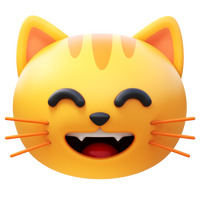Why does my cat eat my hair? The answer to this question can provide valuable insights into your cat’s health and behavior. Cats may ingest hair for various reasons, ranging from medical conditions to behavioral issues. Understanding the underlying cause can help you address the problem effectively and ensure your cat’s well-being.
Hair ingestion in cats is a relatively common issue, and it can be distressing for both the cat and the owner. If you notice your cat eating its own hair or yours, it’s essential to observe its behavior and seek veterinary advice to rule out any underlying medical conditions.
Medical conditions that may contribute to hair ingestion include digestive issues, skin allergies, or pica, a condition where cats eat non-food items. Stress and anxiety can also lead to compulsive hair-eating behavior. Once any medical causes have been ruled out, you can explore behavioral reasons for your cat’s hair-eating habit.
Tips to Address Hair Ingestion in Cats
Addressing hair ingestion in cats involves a multifaceted approach that includes identifying the underlying cause, providing environmental enrichment, and implementing behavior modification techniques.
Environmental enrichment plays a crucial role in keeping your cat engaged and stimulated, reducing the likelihood of boredom and stress-induced hair eating.
Tip 1: Providing interactive toys and puzzle feeders can stimulate your cat’s natural hunting instincts and provide mental challenges.
Tip 2: Creating a vertical environment with cat trees and shelves allows your cat to climb and explore, mimicking its natural habitat and reducing boredom.
Tip 3: Regular brushing helps remove loose hair and prevents matting, making it less appealing for your cat to ingest.
Tip 4: If stress or anxiety is suspected, consider using pheromone diffusers or consulting with a veterinary behaviorist for guidance on behavior modification techniques.
Tip 5: Avoid punishing your cat for hair ingestion, as this can worsen the behavior. Instead, focus on positive reinforcement and rewarding your cat for appropriate chewing behaviors.
Frequently Asked Questions about Hair Ingestion in Cats
1. Is hair ingestion common in cats?
Yes, hair ingestion is a relatively common issue among cats, affecting both short- and long-haired breeds.
2. Can hair ingestion cause health problems in cats?
Excessive hair ingestion can lead to digestive issues such as hairballs, vomiting, and constipation. In severe cases, it can cause intestinal blockage, requiring surgical intervention.
3. What are the signs of hair ingestion in cats?
Signs of hair ingestion include frequent coughing, vomiting hairballs, and constipation. You may also notice your cat excessively grooming itself or chewing on non-food items.
4. How can I prevent my cat from eating hair?
Preventing hair ingestion involves a combination of measures, including regular grooming, providing environmental enrichment, and addressing any underlying medical or behavioral issues.
5. When should I seek veterinary help for my cat’s hair ingestion?
If your cat exhibits persistent hair ingestion or shows signs of digestive distress, such as vomiting or constipation, it’s important to seek veterinary attention promptly to rule out any underlying medical conditions and receive appropriate treatment.
Understanding the reasons behind your cat’s hair-eating behavior is the first step towards finding a solution. By addressing any medical issues, providing a stimulating environment, and implementing positive behavior modification techniques, you can help your cat overcome this habit and maintain a healthy and happy life.
Youtube Video:

